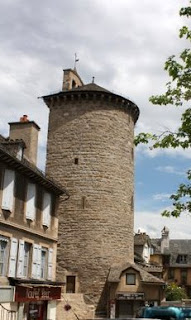 ... Graham Miller, fresh from the intense activity of his launch of his book. Graham, thanks for being here and tell me all about your new release...
... Graham Miller, fresh from the intense activity of his launch of his book. Graham, thanks for being here and tell me all about your new release...
AW Congratulations! And what first got you into writing and why?
GHM When
I was a teenager I got into role playing games. And (being old) I mean the ones
with paper, pens, dice and little lead figures. From there I got into writing
the scenarios that people can explore – my first writing success was when I was
15 and got a scenario published in a magazine. At university I still played but
got frustrated because even as the dungeon master (kind of like the referee in
the game) I couldn’t control the whole thing. I was always reading fiction and
often found myself thinking “why didn’t the book end differently?” or sometimes
“what would happen if a book started like this?” It was only a matter of time
before all these influences came together and I started writing books in my
early twenties.
AW
You write Crime/Mystery. Is it all imagination or do you also undertake research?
GHM I
use research really heavily. I find it annoying if there are factual errors in
books that I read, so I don’t want to put them into the books that I write. In
my area this includes things like referencing WPCs (all constables have been
called PC regardless of gender for over twenty years) and getting the police
ranks wrong. I also broaden out my definition of what is research. I make a
conscious effort to watch programs about crime, police procedure even reality,
fly-on-the-wall programs about the emergency services.
All that input sparks ideas in my head and eventually
I patch together ideas for crimes, character sketches, locations and other odd
things. Then I plot it out and go and check the details. One of the things I
like is finding odd little parts of life that people might not know about and
bring them into my novels as background. At the moment the sequel features a
character who’s in a bike gang so I’ve been looking into that area to bring a
bit of background and depth.
I also do a lot of geographical research. I’ve had
feedback that the area of South Wales around Cardiff is so well described in
The List that it feels like a character all of its own. I can only do that if I
go out and visit the places. I’m a house-husband and that seems to involve a
lot of ferrying the children around, so I use that time to look around me and
find places to bring into my writing.
AW
And what about other types of writing? Have you ever dabbled with short stories,
for instance, or other genres?
GHM I’ve
never really been attracted to short stories, plays or any other format – it’s
always been the novel. But I do experiment with genre. Back over five years ago
I was working on a hugely ambitious cross-genre novel about reincarnation. That
was part fantasy, part post apocalyptic and part historical. (And yes, it was
influenced by David Mitchell!) My bottom drawer of failed projects includes
experimental science fiction and fantasy too.
But, as I started learning the craft of writing I realised that if I was going to sell my work to an agent or
publisher, then I had to give them less reasons to say “no”. So, having a
cryptic crossword, puzzle solving type of brain, I decided to settle firmly
into the genre of crime writing. That way, I don’t have to explain my book – I
can say “it’s a police crime novel” and people immediately get it. That removes
one barrier to success.
 AW
Famous authors, such as Roald Dahl and Dylan Thomas,
had a special space for writing. Do you have a writing ‘shed’ of your
own?
AW
Famous authors, such as Roald Dahl and Dylan Thomas,
had a special space for writing. Do you have a writing ‘shed’ of your
own?
GHM I
have my rather battered old laptop which is my writing space. I always insist
on a good battery, and have my software set-up just how I like it. (I mostly
write in Scrivener to start with before final edits in Word.) This means that I
can take my work anywhere – coffee shop, waiting outside a child’s activity,
writing retreat. That said, mostly I write sat at the table at home or (don’t
tell my physio) slouched on the sofa.
AW
Finally, if you had a whole afternoon to yourself and
could choose to spend it with any one individual, living or dead or a character
from a book, who would it be, and what would you want to discuss?
GHM Wow! That is such a wide-open question. I guess I’d
want to sit down with an author I really admire and talk to them about all the
technicalities of writing and how they work. If I was absolutely pushed to name
just one, it’d be Julian May. How did she manage all of the plot arc between
The Many Coloured Land and The Intervention series? And did she
know how all eight books would fit together before she started book one?... you can follow Graham on Facebook Twitter his Website and on Amazon










